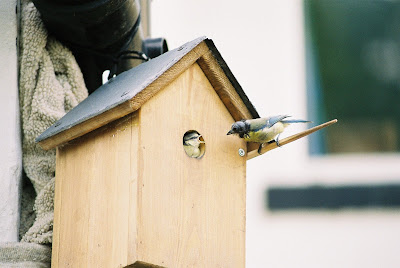A night time explorer to our garden, and not particularly welcome (like the slugs...)
The Brown Garden Snail is (of course) common and widespread in the UK. You can see from my photos that it has four 'protruberances' from its head - the top two bearing eyes, the bottom two sensory organs (no sight) only.



I'm sure you will know that snails are hermaphrodytes, and if you ever wanted an accurate top speed figure for these snails, to bore people at dinner parties with - its .03 mph.
Or to put it in terms more easily digestable - this snail, if it had to crawl ONE MILE without stopping, at top speed, it would take virtually a day and a half to complete its epic voyage.
That said, if you are in the habit of throwing your garden snails over the next door neighbours' fence (our neighbours have no growing vegetables, so don't get all haughty taughty on me!), let's say a distance of 5m, your snails (should they so desire), could be back at the spot you threw them from (providing there's a small hole under the fence) within 6 minutes!
Helix aspersa IS used in "Heliciculture" (snail-rearing for culinary purposes), but not as widely as the "Roman or Burgundy Snail" (Helix pomatia), shown below. (Not my photo).
Roman Snails can be found wild in the UK (although they are far from common), and are golf-ball sized, much larger than Brown Garden Snails with a duller, plainer, different shaped shell.

The Garden Snail in France is eaten as "Petit gris", but one is more likely, when ordering Escargots, to receive Roman Snails.
My mother very nearly bred Roman Snails at our family home years ago, I think that would've been a lot of fun, and Anna had the idea to get me a Giant African Land Snail as a present once! (I secretly hope she still does)!





































 First look outside. Wow! It's a big world!
First look outside. Wow! It's a big world!












